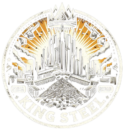HRC
Understanding Hot Rolled Coil (HRC): Process, Applications, and Market Dynamics
In the vast landscape of the steel industry, Hot Rolled Coil (HRC) stands out as a fundamental product with widespread applications ranging from automotive manufacturing to construction. This versatile material, characterized by its strength and durability, is produced through a meticulous process that significantly influences its properties and applications. This article delves into the production process of HRC, its various applications, and the factors that drive its market dynamics.
The Production Process of Hot Rolled Coil
The journey of HRC begins with the heating of steel slabs to high temperatures, where they become malleable. This process takes place in a reheat furnace, where temperatures soar above 1,000 degrees Celsius. Once the slabs are heated thoroughly, they are passed through a series of rollers in the roughing mill, where they are flattened and elongated. This step is crucial as it determines the thickness of the coil.
Following the roughing mill, the steel passes through the finishing mill, which further reduces its thickness and gives it a smooth finish. The steel is then cooled, either through air or water quenching, to room temperature. This rapid cooling process is essential as it locks in the steel’s structural properties, making it stronger and more durable. Finally, the steel is coiled into rolls, thus earning the name Hot Rolled Coil.
Applications of Hot Rolled Coil
The applications of HRC are vast and varied, thanks to its robustness and malleability. One of the primary sectors that utilize HRC is the automotive industry. Here, HRC is used to manufacture chassis, wheels, and other structural components of vehicles. Its strength and flexibility make it an ideal choice for parts that require resistance to wear and tear.
In the construction industry, HRC serves as a foundational material for building infrastructures such as bridges, buildings, and railways. Its ability to withstand environmental factors such as heat, cold, and corrosion makes it a reliable choice for outdoor structures.
Furthermore, HRC finds its application in the production of pipes and tubes used in the oil and gas industry, where durability and resistance to high pressure are paramount. Additionally, the agricultural equipment manufacturing industry relies on HRC for machinery that demands high strength and toughness.
Market Dynamics of Hot Rolled Coil
The market for HRC is influenced by several factors, including global economic conditions, demand from key industries, and raw material prices. The automotive and construction sectors are significant drivers of HRC demand, as their growth directly impacts the need for steel products. Economic expansions and infrastructural development projects across the globe fuel the demand for HRC, driving its market growth.
However, the market for HRC is also susceptible to fluctuations in raw material costs, notably iron ore and coal. These materials are essential in the steel-making process, and their prices can significantly affect the cost of producing HRC. Consequently, any volatility in raw material prices directly impacts HRC prices.
Environmental regulations and technological advancements are also shaping the HRC market. As the world moves towards sustainability, the steel industry is under pressure to reduce its carbon footprint. This scenario has led to innovations in production processes to make them more energy-efficient and environmentally friendly, influencing HRC production costs and market prices.
Conclusion
Hot Rolled Coil is a pivotal material in the steel industry, with a wide range of applications across various sectors. Its production process, from heating and rolling to cooling and coiling, plays a crucial role in determining its properties and suitability for different applications. The market dynamics of HRC are influenced by a complex interplay of factors, including industrial demand, raw material prices, and environmental regulations. As industries continue to evolve and new technologies emerge, the demand for HRC is expected to remain robust, underpinning its significance in the global steel industry.
